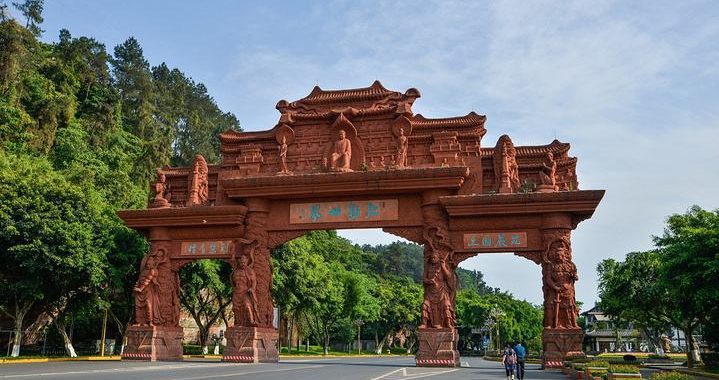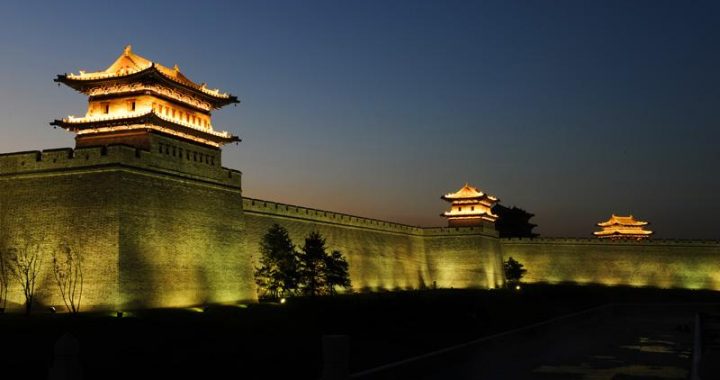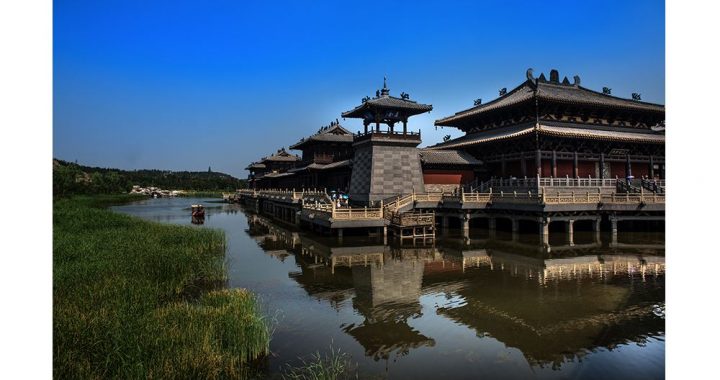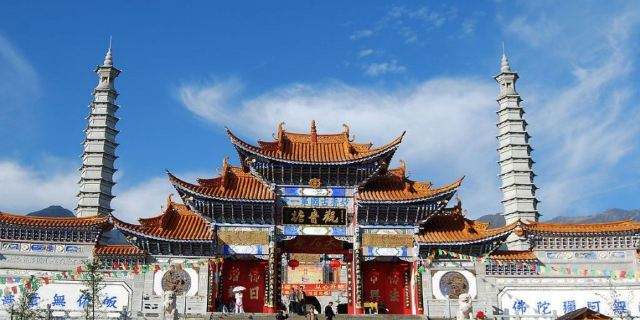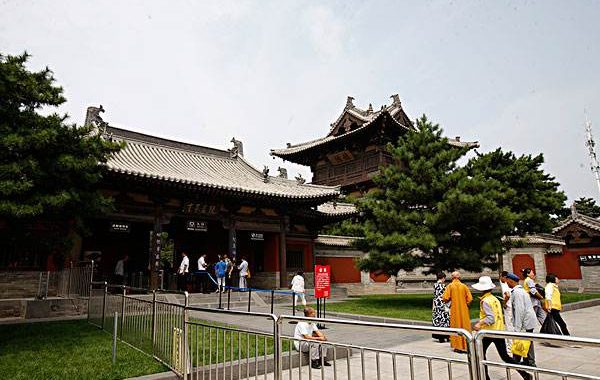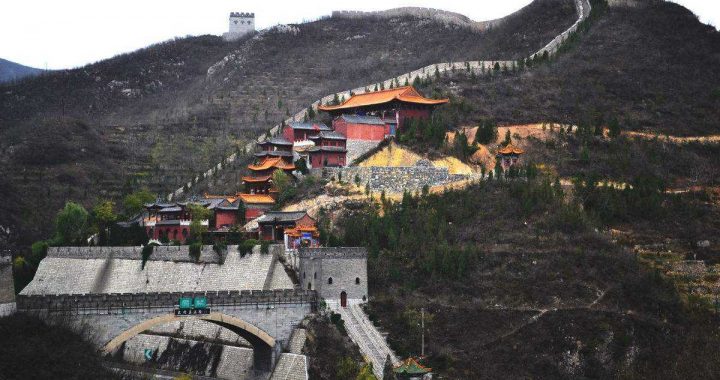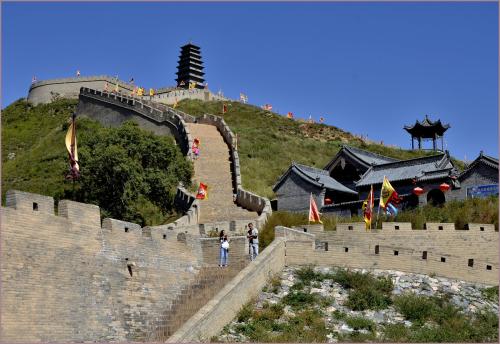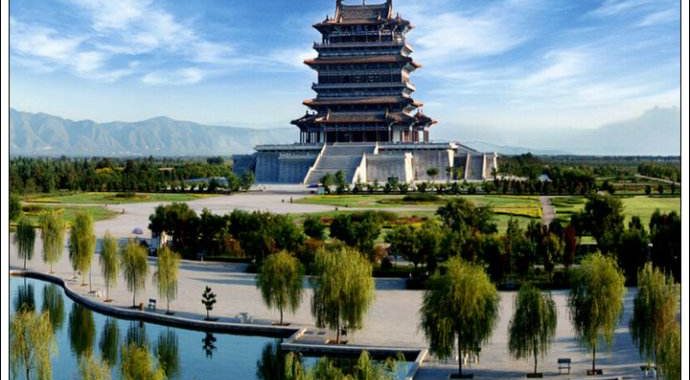Sacred Land of China
8 min readIn the history of China, three dynasties have tended to be seriously neglected: the Sui Dynasty (581-618), obscured by the splendid Tang Dynasty, the Ming Dynasty.

outshone by the great Qing Dynasty, and the Northern Wei of the Northern Dynasties.
Here, we’d like to introduce the latter. Compared to the flourishing Tang Dynasty that has been extremely well documented, the Northern Wei Dynasty that ruled Northern China from 386 to 534 CE lacks sufficient historical records. As a result, its unique features and the foundations it laid for the emergence of the Tang Dynasty in the following century have long been veiled in ignorance.
Datong formed the blessed land of the Northern Wei Dynasty, while the latter was the pride of Datong forever. The Northern Wei Dynasty was a forceful prelude to the Sui and Tang dynasties, which brought its initial achievements to a brilliant climax.
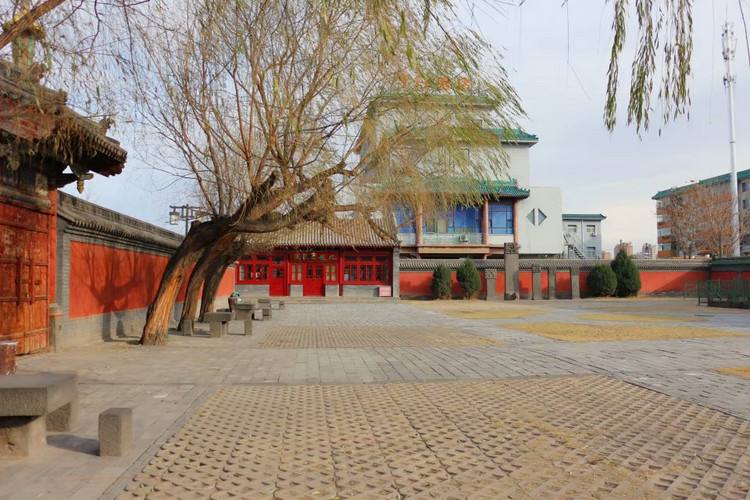
In the late Han Dynasty and the early Jin Dynasty (265-420), China experienced great changes. It was a period that has been colorfully described as “gusty winds sweep away fleeting clouds, when the northern nomads, including the Tuoba Xianbei tribe, strove to invade the Central Plains.
At the beginning of the first century CE, the Tuoba tribe suddenly migrated to the area close to the Great Wall after leaving the Gaxian Cave and traversing the Greater Higgnan Mountains and the vast Mongolian Plateau, and appearing suddenly like a snowstorm. This migration took place just after Liwei became tribal head. The event has been clearly dated in 220, first year during the reign of Emperor Gaozu of Wei State (220-265) of the Three Kingdoms (220-280), when Cao Pi established the Wei Kingdom after usurping the power of the Han Dynasty.
The Tuoba tribe played a role as a close ally in the Western Jin’s attack onthe forces of Liu Yuan, Liu Cong, Shi Le, and so on. When Emperor Taizu took the crown, the Northern Wei Dynasty was becoming powerful, having overrun the area of Hebei and part of Shanxi, established a capital in Pingcheng(“peaceful County” later Datong), and assumed the reign title of “Wei”.
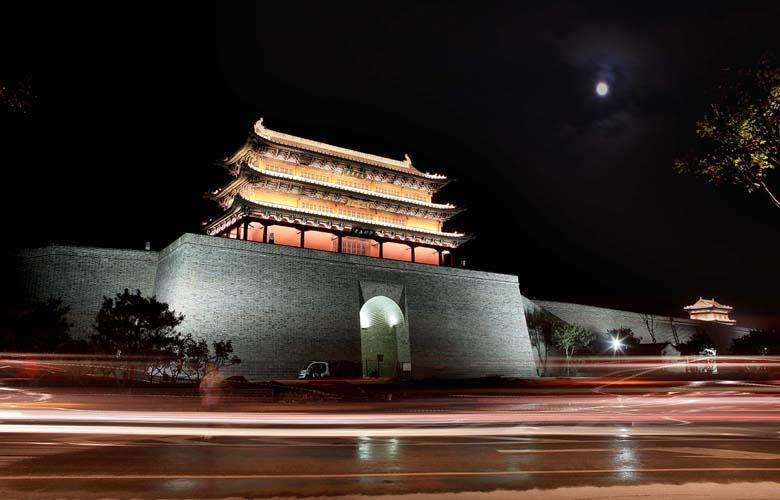
Historians tend to regard it as a dynasty characterized by the themes of “great national migration, great integration, and great social transition”. Due to the presence of the Yungang Grottoes, as brilliant as peach blossom, some countries in Central Asia and Europe gave the Northern Wei Dynasty an art nname-“Taugast” dynasty.
In 395, the powerful Late Yan State in the north sent an 80,000-strong army to attack the Northern Wei. Under personal leadership of Northern Wei Emperor Taizu, however, an elite cavalry troop of 20,000 soldiers, counterattacked in Canhepo(northeast of Yanggao County, Datong), utterly routing the invaders with heavy casualties and effectively ending the existence of the Late Yan State. Two tribes formed the Xianbei etrhnic group, namely the Tuoba and the Murong; history chose the former, however, to establish a mighty kingdom.
The last flower falls off the horseshoe;
Grass like the soil dyes the tweedle into yellow; River water flowing slowly is like the black and white memory; Occasionally, the wolf’s howling can be heard; Swan geese fly across the sky; The north in the soul is the eternal homeland; Wine is always available on the grassland; Singing sound can always be heard in the yurt; A pot of milky tea melts miles of ice and snow; The spring sun rises over the horseback.
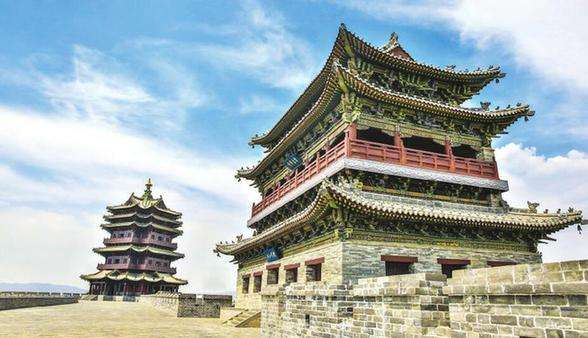
The people of Tang Dynasty had the characteristics of the northern barbarian tribes.”The great separation era ended in the 6th century… New Chinese people with the characteristics of northern ethnic group tribes proudly rose. In the 7th century, they brought their great ability into full play again and created the second golden age of ancient China.”
Since the Xia Dynasty, China had been ruled by the Han ethnic group. The Northern Wei Dynasty was the first regime established by the northern minority people. Their eruption into the Central Plains shook the then world and Europeans called ancient China “TABAC”-Tuoba.
Northern and Southern Dynasties play a significant role in the long history of China. The Northern Dynasties include the Eastern Wei Dynasty, Western Wei Dynasty, Northern Qi Dynasty and Northern Zhou Dynasty, while the Southern Dynasties include the Song Dynasty, Qi Dynasty, Liang Dynasty and Chen Dynasty in succession. The first source of Chinese civilization were the Xia, Shang and Zhou dynasties, followed by the Qin and Han dynasties, which incubated the distinctive Han civilization. The second source of Chinese civilization is the Northern Wei Dynasty, followed by the Sui and Tang dynasties that created the golden northern ethnic groups and Han civilization on the foundations of Han civilization.

The Sui and Tang dynasties imitated the Northern Wei Dynasty in terms of political system and main State framework. In addition, Chang’ an City (Xian) of theTang Dynasty imitated the style of Pingcheng (Datong) and Luoyang of the Northern Wei. Ancient China was unified in the Sui Dynasty, which can be regarded as the amplification and solidification of the work done by the Northern Wei Dynasty; the Tang Dynasty then brought this to its ultimate conclusion. The unification of north and south and the integration of northern ethnic groups and Han civilizations ultimately created the glory of the Sui and Tang dynasties recorded in the history books.
At the beginning, the Northern Wei Dynasty was composed of “eight tribes”, such as the Helan and Dugu. Dugu Xin was a man of Xianbei nationality in the Northern Zhou Dynasty. He served as Commander in Chief of.11 Prefectures in the area of west of Lipan Mountain and governor of Qinzhou Prefecture. He had becomeknown as the best “father-in-law”in Chinese history because his eldest daughtermarried Yuwen Yu, Emperor Shizong of the Northern Zhou Dynasty (557-581), and was conferred with the title of “empress Jing”; his fourth daughter married Li BingEmperor Shizu of the Tang Dynasty and was conferred with a posthumous title of “empress Yuanzhen”, her son was Li Yuan, Emperor Gaozu of the Tang Dynasty; his seventh daughter married Yang Jian, Emperor Gaozu of the Sui Dynasty, and her son was Yang Guang, Emperor Shizu of Sui. Therefore, Dugu Xin was the maternal grandfather of Yang Guang and Li Yuan, while Li Yuan was the nephew of Yang Jian.
According to historical records, the emperors of the Late Zhou, Sui and Tang dynasties had a blood or marital relationship rarely seen in history.
Gao Huan, one of founders of the Eastern Wei Dynasty and the sole founder of the Northern Qi Dynasty, was of Han ethnic group although much affected by Xianbei ethnic group culture; he had a Xianbei name of “Heliuhun”.

Yuwen Tai, founder of the Western Wei Dynasty, belonged to the Xianbei ethnic group. After establishment of the Nortern Zhou Dynasty, he was conferred with a title of “Emperor Wen”. Yuwen Tai was the man who created the “Stat ionary-Troop Service System”. Unlike Emperor Gaozu of the Northern Wei Dynasty, who ordered the conversion of all surnames to Chinese style, Yuwen Tai conferred each general of Han ethnic group with a Xianbei surname.
Yang Jian had a Xianbei surname of “Puliuru”. His father Yang Zhong was the founder of the Northern Zhou Dynasty, and one of the 12 generals of the Western Wei Dynasty. His highest official rank was “Zhuguo”. He was conferred with a title of “Duke Suiguo”, and his family would inherit the rank of nobility. Dugu Xin felt satisfied with Puliuru Jian, and allowed his daughter Dugu Jialuo to marry him.

Later, Yang Jian’s daughter Yang Lihua became the first empress of Emperor Yuanzongof the Northern Zhou Dynasty. By monopolizing the imperial court in the capacity of auxiliary minister and prime minister, Yang Jian gradually created the conditions for replacing the Northern Zhou Dynasty with the Sui Dynasty of which he became the emperor.
Emperor Taizong Li Shimin was respectfully called “Heavenly Khan”by the northern ethnic minorities. But before that, Yang Jian had won the title of “Saint Khan”awarded by the northern nomads represented by Tujue.
Li Yuan’s wife, with a surname of “Dou”, was born in a noble Xianbei family.
Her father Dou Yi was the Shangzhuguo (general) of the Northern Zhou Dynasty, and her mother was the elder sister of Emperor Gaozu of the Northern Zhou Dynasty, and also the eldest daughter Princess Xiangyang of Yuwen Tai. Li Yuan’s daughter was the empress of EmperorYuanzong of the Northern Zhou Dynasty.

Emperor Taizong’s wife was Empress Wende, with a surname of “Zhangsun” (mother of Emperor Gaozong). Her ancestor was the elder brother of Emperor Xianzu of the Northern Wei Dynasty.
Thus, the Eastern Wei, Western Wei, Northern Qi, Northern Zhou, Sui and Tang Dynasties all had familial relations with the Northern Wei Dynasty, and were totally different from the Southern Dynasties dominated by the Han ethnic group. During thatperiod, all founders of dynasties were military officers of the Northern Wei Dynasty or relatives of the emperor. Gao Huan, Yuwen Tai, Yang Jian and Li Yuan were all closely related to the Tuoba tribe, and they had the same collective memory and genetic inheritance. Although the Northern Wei Dynasty was divided into Eastern Weiand Western Wei, they were controlled respectively by the ministers of the Northern Wei, namely Gao Huan and Yuwen Tai. It wasn’t long before the Eastern Wei and Western Wei were renamed as Northern Qi and Northern Zhou, and their emperors were, respectively the sons of Gao Huan and Yuwen Tai. Noble Yang Jian and Li Yuan of the Northern Wei Dynasty, meanwhile, established the Sui and Tang Dynasties in succession.
The Sui Dynasty’s unification of China, by destroying the Southern Dynasties, differs from the Qin Dynasty’s unification of six states many centuries before, the Jin Dynasty’s unification of the Three Kingdoms, and the Song Dynasty’s unification of the Five Dynasties and Ten Kingdoms. The main aspects of thecontradiction determine the nature of things. The Sui Dynasty inherited the traditions of the Northern Wei Dynasty. The integration of Hu culture and Han culture, the combination of nomadic and farming life, and the northern rigid temperament dominated the spirit and style of the Sui and Tang dynasties. Chinese people became vigorous and upright because of the fresh blood of the northern minorities.
The Northern Wei Dynasty had huge epochal impact, and was unprecedented because it was the first regime established by an ethnic minority. Later, ethnic minorities successively established many regimes such as Liao Dynasty of Khitan (Khitan), Xixia Dynasty of Dangxiang, Jin Dynasty of Nuzhen, the Yuan Dynasty of the Mongol ethnic group, and the Qing Dynasty of the Manchu people.

